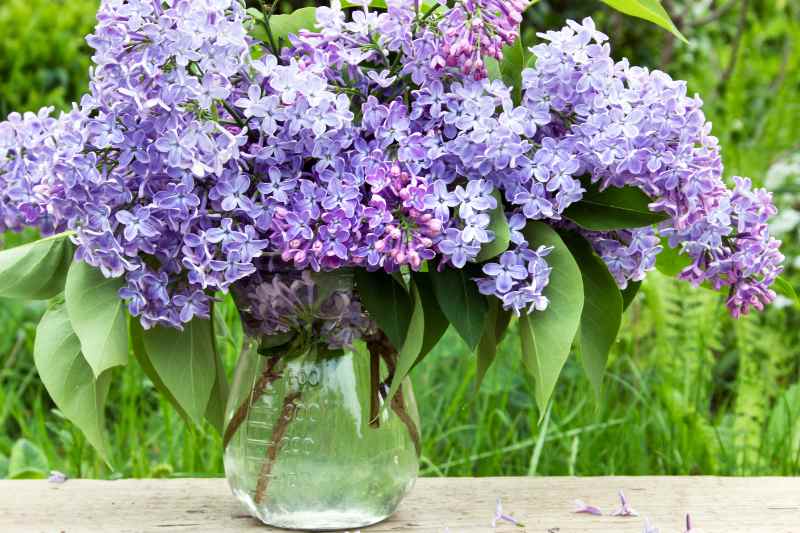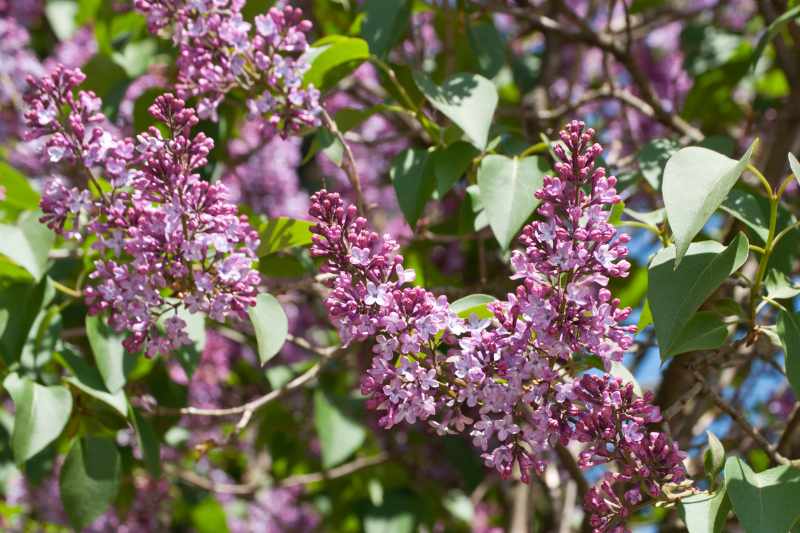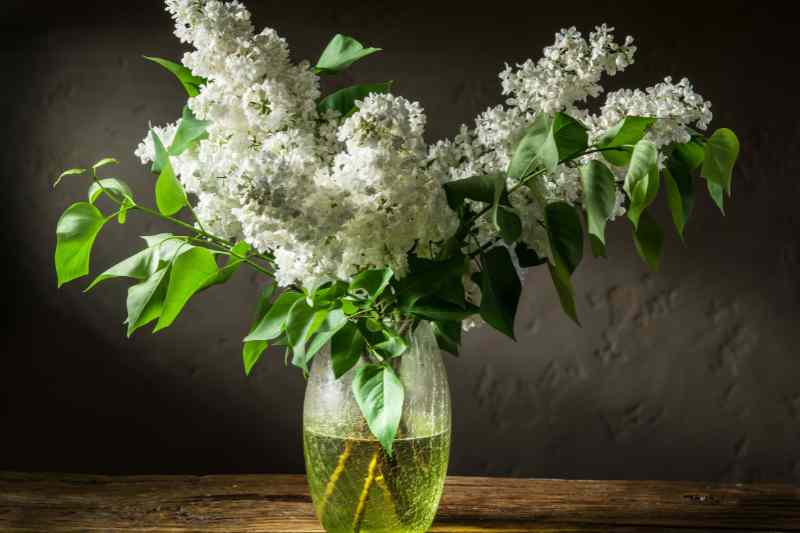Lilac, with its delicate flowers and intoxicating scent, is a symbol of spring. But did you know you can enjoy its beauty and scent in mid-winter? By forcing shoots to flower, you can create scented bouquets that will brighten your home and add a touch of winter freshness.

Which lilac are we talking about?
For forcing lilac (genus Syringa), it is preferable to use varieties known for their robustness and ability to adapt to different growth conditions. Common lilacs (Syringa vulgaris) are often chosen for this practice because of their wide range of colours and their strong, pleasant scent. Early-flowering varieties of Syringa vulgaris are particularly suited to forcing, as they tend to respond more quickly to changes in environmental conditions.
In addition, hybrid lilacs, such as Syringa × hyacinthiflora (like 'Maiden's Blush'), which result from cross-breeding between Syringa vulgaris and Syringa oblata, are also good candidates for forcing. These hybrids flower a little earlier in the season than common lilac, which can be advantageous for indoor forcing.
And other Syringa? Lilacs such as Syringa microphylla (small-leaved lilac), like variety 'Superba', and Syringa meyeri (Meyer's lilac), like variety 'Palibin', can also be used for forcing, although these species are less commonly used for this practice than Syringa vulgaris (common lilac). Success with forcing will be more variable in these cases.

Why "force" lilac shoots?
One main attraction of this practice is its ability to accelerate flowering. By simulating spring conditions indoors, shoots are encouraged to develop and flower well before their time. This means that you can enjoy the splendour and intoxicating scent of lilacs, even in the heart of winter, a time when few plants are in flower.
Beyond the aesthetic aspect, forcing shoots to flower indoors also has a positive effect on wellbeing. The delicate, recognisable scent of lilac evokes happy memories, lifts mood and even reduces stress. At a time when lack of natural light and cold temperatures can affect mood, introducing an element of nature indoors is particularly comforting.
Moreover, this practice provides a practical way to understand how environmental conditions influence plant growth and flowering.
A bit of vocabulary: in horticulture, "forcing" refers to technique of inducing a plant to flower outside its natural season by modifying environmental conditions such as light, temperature or humidity. This practice allows enjoying flowers and fruit at times when they would not normally be available.
When to start forcing lilac shoots?
Flowering of common lilacs planted in garden takes place from April to May depending on species or variety. If you want to force shoots at home, it is to enjoy the flowers before they open outdoors. Best time to force lilac flowering indoors is therefore winter, between December and February.
Steps to follow
- Selecting shoots : choose lilac shoots that are healthy and robust. Prefer those with buds already well formed, a sign that flowering is near. Ideally, harvest shoots early morning, when plant is well hydrated.
- Preparing shoots : once harvested, prepare shoots by removing lower leaves that might dip into the water. This prevents formation of bacteria in the vase and promotes better water uptake by the shoots.
- Encouraging water uptake : to maximise water uptake, make a slanting cut at the stem ends and slightly split the base of the shoots with your pruning shear. This will increase the surface through which water can be absorbed.
- Soaking: Place shoots in a vase filled with lukewarm water (about 18°C). Lukewarm water will encourage buds to open more quickly. Change water every two days to keep shoots fresh and healthy.
- Choice of location : place your vase in a cool spot (10-12°C) away from direct sunlight. A cool temperature will extend life of your flowers. Shoots will start to flower within one to two weeks.
Important! If you harvested shoots early in the season (December–January), shoots will need a period of cold, as outdoors, to "wake" the buds: place the vase in a cool, dark spot (between 0°C and 5°C) for 4 to 6 weeks, checking the water level regularly. If you harvested shoots between late February and March, this cold period is unnecessary.
How long should lilac shoots be?: Ideal length for cut lilac shoots for forcing generally varies between 30 and 60 centimetres. This length not only ensures optimal water uptake thanks to a sufficiently long stem immersed in the vase, but also provides enough flexibility for arranging the stems in the vase.

Care to provide
It is essential to keep water clean and fresh to avoid development of bacteria that could harm health and flowering of the shoots. Change water every two days or as soon as it becomes cloudy is good practice. Using water at room temperature helps reduce thermal shock for plants, favouring better absorption of nutrients.
In addition, removing faded flowers plays an important role in bouquet maintenance. When a flower fades, it diverts resources that could be better used by developing buds, and it can also become a favourable ground for development of disease or mould that could affect other flowers. By removing these regularly, energy is encouraged to focus on opening remaining buds, allowing the bouquet to stay vibrant and attractive for longer.
Equipment needed
- A clean, sharp pruning shear
- A vase large enough for the cut shoots
































Comments